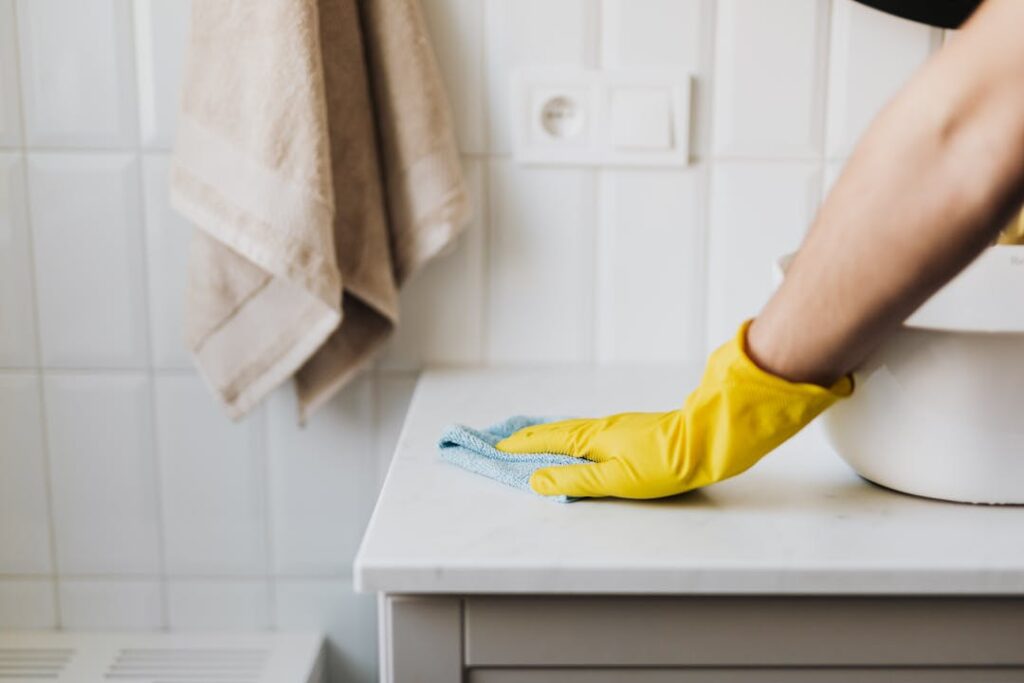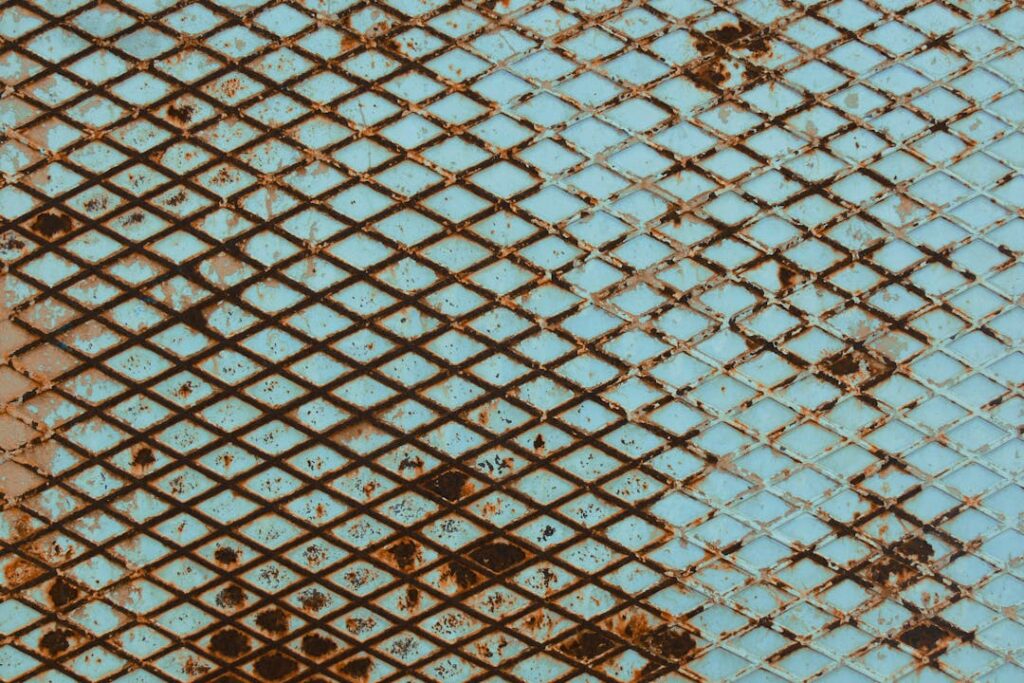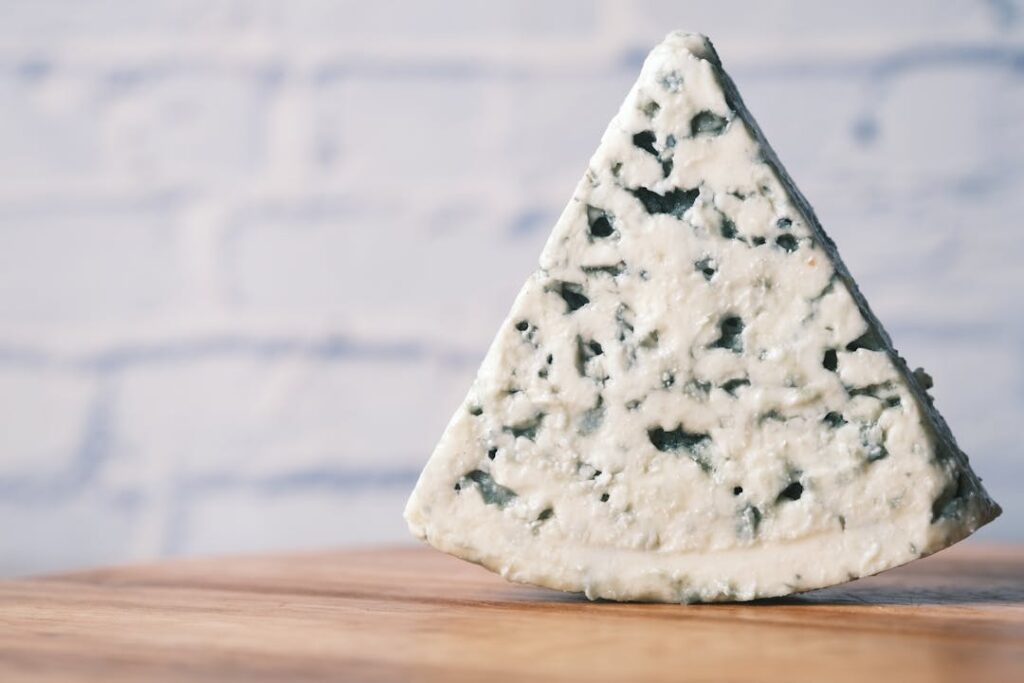Getting rid of mold spores in the air and on surfaces can be challenging, a nuisance, and a health hazard.
Not only do they create unpleasant odors, but they can also trigger allergies and respiratory issues. In addition, they can also have a significant impact on the structural integrity of your property.
Do you want a mold-free environment? If you’re dealing with mold in your home or workplace, stay with us as we explore ways and means of eliminating it.
In this guide, we’ll cover everything you need to know about how they form, what causes them to spread, and, most importantly, how to get rid of mold spores safely and improve air quality for a healthier living space.

Understanding Mold Spores
Before diving into removal techniques, it’s crucial to understand what mold spores are and how they contribute to air pollution.
To begin, so that mold colonies reproduce, they must release tiny particles known as mold spores. These spores can easily become airborne and spread throughout your home, leading to mold growth in various areas. As such, they are present in both indoor and outdoor environments.
More important to realize is that most of the spores are not visible to the naked eye. But you can smell them- a musty, rotten vegetable smell. Some molds are sticky and will easily cling to surfaces.
Identifying Mold Infestations
So, if they are tiny, how does one notice them?
The first step in eliminating mold spores is to identify areas of mold growth in your home.
Common places where mold thrives include damp basements, bathrooms, kitchens, and areas with poor ventilation.
If you notice a slimy, discolored patch in your surroundings (it could be a wall, a ceiling, or the floor), it is likely mold. Keep an eye out for not only visible signs of mold but also musty odors.
If not countered effectively, mold infestation’s allergens will have the following effects on your home:
- Wheezing and asthma that are mold-induced
- Stuffy nose
- Itchy skin and eyes
- Pneumonitis aka lung infection
So to avoid these health concerns, here are steps you must take to remove the spores of mold in your surroundings.
Effective Mold Removal Techniques
1. Improve Ventilation
How well-ventilated is your room? The commonest and most free method of circulating air in a room is to open the windows of the room.

Besides opening windows, you can use fans as a faster way of clearing virus particles, particularly in rooms with smaller windows like washrooms.
The role of ventilation and air purification in mold prevention is important.
In other words, proper ventilation is key to reducing moisture levels in your home and preventing mold growth.
In short, ensure that you adequately ventilate bathrooms, kitchens, and laundry rooms with exhaust fans. Additionally, using air purifiers can help circulate fresh air and remove mold spores from indoor spaces.
2. Address Moisture Issues
In cleaning discussions, there are myths about molds that do the rounds. Common misconceptions about mold include:
- All molds are dangerous. (Not quite! Surprisingly, mold can be good for blue cheese. Also, for bead making)

- DIY is not advisable for large areas of infestations (You can handle mold without an expert, the size regardless)
- It’s difficult to tell if it is mold (You can tell by the smell and dampness)
- Paint can remove mold (No, it can’t)
- Bleach can kill mold (It can’t. The best detergent to eliminate mold is hydrogen peroxide).
Mold thrives in damp environments, so it’s essential to address any moisture issues in your home promptly.
Repair leaks in plumbing, roofs, and windows to prevent water from seeping into walls and ceilings.
Once in a while, use dehumidifiers in damp areas to control humidity levels and discourage mold growth.
3. Clean and Disinfect
As stated above, you don’t have to call in experts when you notice mold. DIY methods for mold prevention and removal are easy.
Regular cleaning and disinfection are all you need to prevent mold growth and remove existing spores.
The most popular and best method is to use baking soda. Spray a solution of baking soda and water before scrubbing it with a brush. Finish with a rinse of the affected area.
Secondly, you can use mold-killing products to clean affected surfaces, such as vinegar or hydrogen peroxide solutions. Scrub surfaces thoroughly and ensure they are completely dry to prevent mold from returning.
4. Use HEPA Filters
In case you want to get more technical (e.g. if the mold is overwhelming you), you can opt to use HEPA filters. It stands for High-efficiency particulate air (HEPA).
These are highly effective filters that capture mold spores and other airborne particles.
Install HEPA filters in your HVAC (Heat Ventilation and Air Conditioning) system and use portable air purifiers equipped with HEPA filters to remove mold spores from the air.
However, you must remove the mold growth first for the HEPA filters to be effective in mold spore removal.
5. Seek Professional Help to Get Rid of Mold Spores
Let me guess what’s on your mind.
You are not a DIY person, or for some other reason, you can’t get the time for this exercise.
If mold infestations are severe or widespread, it’s best to seek professional help from certified mold remediation specialists.
These experts have the knowledge, experience, and equipment to remove mold from your home and restore indoor air quality.
Hiring a professional mold inspector will save you headaches and time to remove the spores.
Do you need this service? Engage us for expert opinion, a quote, and finally the regular maintenance of mold in your premises.
Conclusion
In summary, eliminating mold spores from the air requires a combination of proactive measures and effective remediation techniques.
By improving ventilation, addressing moisture issues, cleaning and disinfecting regularly, using HEPA filters, and seeking professional assistance when needed, you can create a healthier indoor environment free from mold spores and their associated health risks.
In the final analysis, you will have that cherished breath of fresh air.
Have you had challenges with mold spores, and how did you sort them? Please share in the comments
FAQs About Mold Spores
Why are mold spores harmful?
Mold spores can cause a range of health issues, including allergies, respiratory problems, and the aggravation of asthma symptoms. Inhaling mold spores can also lead to infections in individuals with weakened immune systems.
How can I tell if mold spores are present in my home?
Signs of mold spores in your home include musty odors, visible mold growth on surfaces (mostly dark and greenish), and allergy symptoms such as sneezing, coughing, and itchy eyes. Professional mold testing can also confirm the presence of mold spores.
What are some natural methods for eliminating mold spores?
Natural methods for removing mold spores include using vinegar, baking soda, or tea tree oil solutions to clean affected areas. Improving ventilation, reducing humidity levels, and increasing sunlight exposure can also help prevent mold growth.
Can mold spores be completely eradicated from indoor environments?
While it’s challenging to completely eradicate mold spores from indoor environments, diligent cleaning, proper ventilation, and moisture control can significantly reduce their presence. The best ways to stop mold infestations are through routine maintenance and quick repair of water damage.
When should I hire a pro to remove mold?
It’s advisable to seek professional help to get rid of mold spores if you have a large infestation, if its growth is present in HVAC systems or inaccessible areas, or if you experience persistent health symptoms despite efforts to eliminate mold. Professional mold remediation experts have the necessary expertise and equipment to safely and effectively remove mold spores from your home.
[…] time and exposure to certain conditions, particularly damp weather, mold might appear on your leather and need your […]